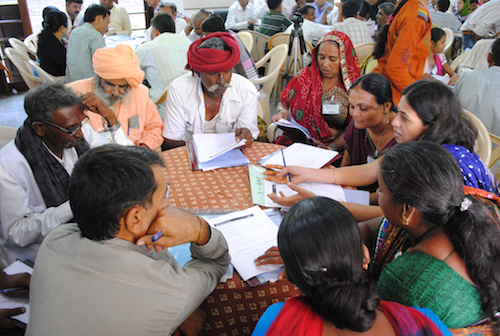HFIAS Questionnaire (in context)

Contents
Contextualizing the HFIAS Questionnaire
In consideration of the recommended questionnaire format for the HFIAS, the questions in the model questionnaire are worded to be as universally relevant as possible.
Certain questions contain phrases or terms, however, that may need to be adapted to the local context to ensure that respondents know their meaning. Some questions require that the interviewer read a locally appropriate definition (e.g., of ‘household’) the first time these words are used in a question. Finally, certain questions may require that the interviewer provide locally relevant examples when the respondent requires further prompting. In order to adapt the phrases, definitions, and examples to the local context and to ensure that questions are understood appropriately, they should be reviewed with a group of key informants and then refined with a small group of respondents before the pre-test. A description of the process of discussing the questions with key informants is provided below:
Step 1: Review with Key Informants
As a first step, gather a few key informants who are familiar with the conditions and experiences of household food insecurity (access) in the areas where the survey will be conducted. It should be explained to the key informants that they are being consulted to ensure that the food insecurity (access) questions are understandable in their country or culture. Where possible, the key informants should be consulted as a group, so that any discrepancies in their suggestions can be clarified at the same time. At the conclusion of the key informant interviews, the key informants’ suggestions for adapting phrases and examples should be incorporated into the questionnaire. The final product of this step should be a draft questionnaire, with locally relevant phrases and examples where necessary, that can be tested with a group of respondents in Step 2.
Step 2: Refining the Questionnaire
The second step in preparing the questionnaire is to ensure that the questions are understood by respondents as they are intended. This step, which is very important in any survey context, enables further refinement of the questions and examples based on insights into how the questions are actually being interpreted. Identify 8-10 individuals that are representative of the survey population (but who are not part of the survey sample). For this step, the discussions are best done with one respondent at a time. First, the Interviewer should read the question, including any suggested rephrasing or examples incorporated after the key informant session. After the respondent has a chance to provide a response, the Interviewer should begin to explore the respondent’s own understanding of the question and its meaning. Tips for doing so are included in table below.
| Comprehension/interpretation probes |
|
| Paraphrase |
|
| Recall probe |
|
| General probes |
|
Adapted from FANTA, HFIAS Indicator Guide, version 3, Coates et al., 2007
A note-taker should record these discussions. Once all of the respondents have provided their input, the notes from all of these discussions should be pooled and examined. Based on respondent feedback, particular phrases, definitions, words, or examples that were unclear should be reworded accordingly. Remember, the goal is to retain the original meaning of the question while making the meaning clearer to respondents where necessary. The final product of this step should be an improved draft questionnaire that is ready to be pre-tested in the field.
Further Recommendations for Using the HFIAS
The questions should be directed to the person in the household who is most involved with the food preparation and meals. Most of the questions require the respondent to answer on behalf of the household and all its members. If the respondent does not understand the question, then the interviewer may prompt the respondent by reading any examples or contextual clarifications that were discussed during training.
Although there are pre-coded response options, the interviewer should not read these options aloud each time but rather allow the respondent to answer in his or her own words. The interviewer will select the most appropriate response option based on the respondent’s reply. If the respondent has difficulty replying then the interviewer can encourage a response by listing the set of options again. The administration of the questionnaire requires approximately 15 minutes per household.
If assessing the change in the household food insecurity (access) situation between two or more years, it is important to administer the survey at the same time of year each time. The most appropriate time of year should be determined based on the intended use of the scale. When using the scale to determine impact of a food security program, it is preferable to administer the survey during or directly after the worst of the ‘lean season’, because the greatest number of households is likely to be affected by food insecurity (access) at this time. This height of the lean season, however, may not be best if the scale is being used for geographical targeting, because the program may not be able to differentiate among those who are severely food insecure during many months of the year and those who are food insecure only during the lean season. This may be important if the program is attempting to target areas with the greatest number of chronically food insecure households.
Consider the original HFIAS questionnaire and the HFIAS introduction pages for complementary reading.
